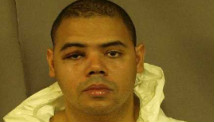WASHINGTON: Hold on to your hats: an asteroid will zoom within spitting distance of Earth next week, in what NASA said is the closest flyby ever predicted for an object this large.
The 2012 DA 14, discovered by chance by astronomers after passing nearby last February, will be just around 17,200 miles (27,700 kilometres) above Earth's surface when it speeds by, the US Space Agency said.
That's outside the Earth's atmosphere, but closer than the orbit of most weather and communications satellites.
However, despite the close shave, NASA said there was nothing to fear.
"This asteroid's orbit is so well known that we can say with confidence that even considering it's orbital uncertainties, it can pass no closer than 17,100 miles from the Earth's surface. So no Earth impact is possible," said Donald Yeomans of NASA's Jet Propulsion Laboratory.
"At the same time, it will pass 5,000 miles inside the ring" of satellites, Yeomans told reporters, saying the asteroid's path puts it right in the "sweet spot" to avoid having any damaging impact.
The asteroid is predicted to come closest to Earth on February 15, at around 1924 GMT, plus or minus a minute or two, and will pass over the Indian Ocean off Sumatra.
It will be visible, with a little help from a telescope, in eastern Europe, Australia and Asia, astronomers said.
"What you would see through a small telescope would be something like a star, a small point of light... that moved against a background of stars," said Tim Spahr, of the Harvard-Smithsonian's Minor Planet Center.
The asteroid measures about 150 feet (45 metres) in diameter. That makes it relatively small by celestial standards.
"The object that ... took out the dinosaurs was about 10 kilometres," said Yeomans.
Nevertheless, if it were to hit the Earth, the impact would be roughly equivalent to a 2.4 megaton bomb -- enough to flatten a large area but not globally catastrophic, he explained.
NASA estimates an smallish asteroid like 2012 DA 14 flies close to the Earth every 40 years, on average, but only hits the Earth once every 1,200 years.
Statistically-speaking, that means we're probably safe for quite a while, since a similar asteroid hit just over 100 years ago.
"With an estimated size of the order of 50 metrer, (2012 DA 14) is comparable in dimensions to the object that destroyed over 2,000 square kilometres of forest in Tunguska, Siberia, on 30th June 1908," Mark Bailey, director of the Armagh Observatory in Northern Ireland, told AFP.
Astronomers have detected some 9,500 celestial bodies of various sizes that pass near Earth, but they estimate that's only a tenth of what's out there.
Even 2012 DA 14 was almost missed last year, because of how quickly it passed through the observable sky, said Jaime Nomen, one of the astronomers who spotted it from the La Sagra observatory in southern Spain.
"It was an elusive target, and it could have been undetected," he told AFP.
But NASA, in its teleconference Thursday, emphasized that it was keeping a careful watch on the skies, including telescopes that make nightly sweeps, with ever improving technology.
"We've found about 95 percent of those larger asteroids that come close to the Earth," said Lindley Johnson, a top official in the space agency's Near-Earth Object Observations Program.
Smaller objects, like 2012 DA 14, are more numerous and harder to spot, he said, but NASA has found "lots" of them.
And based on the agency's observations and analysis, this is the nearest brush for a serious asteroid impact for the foreseeable future.
-AFP/fl













